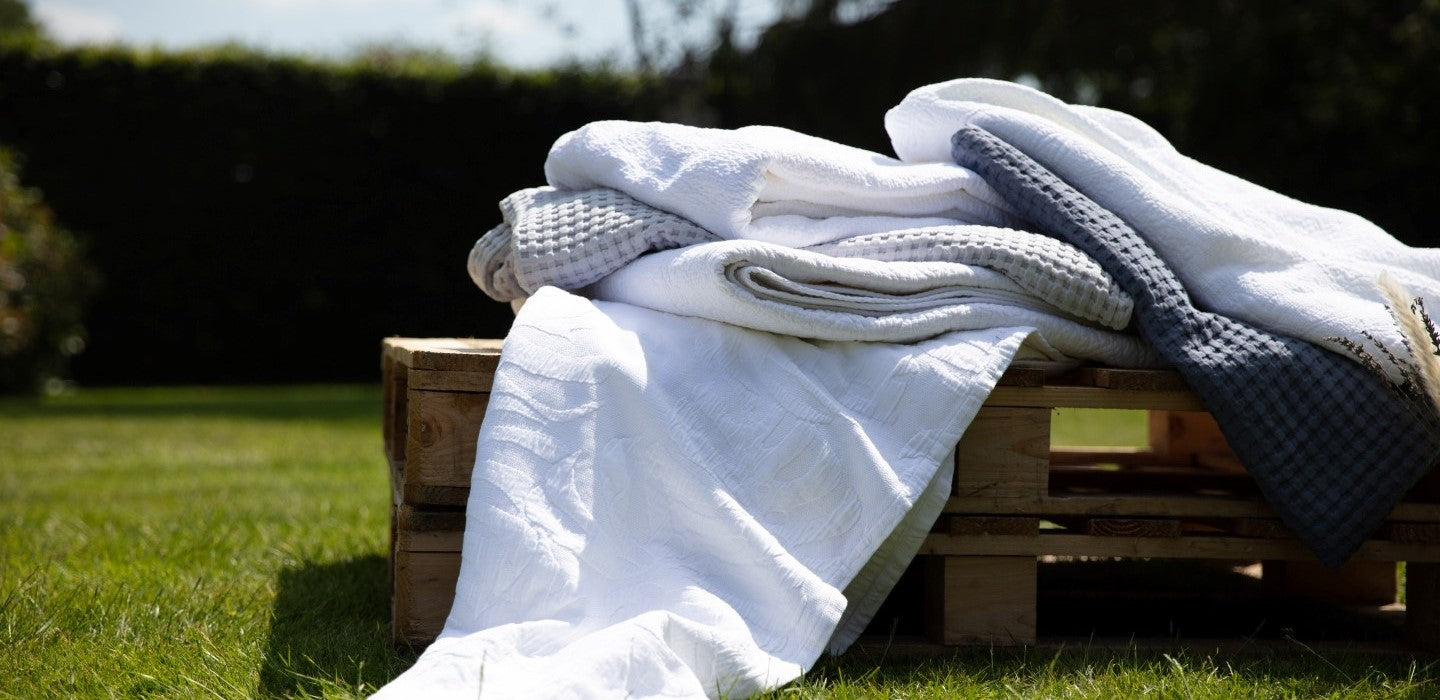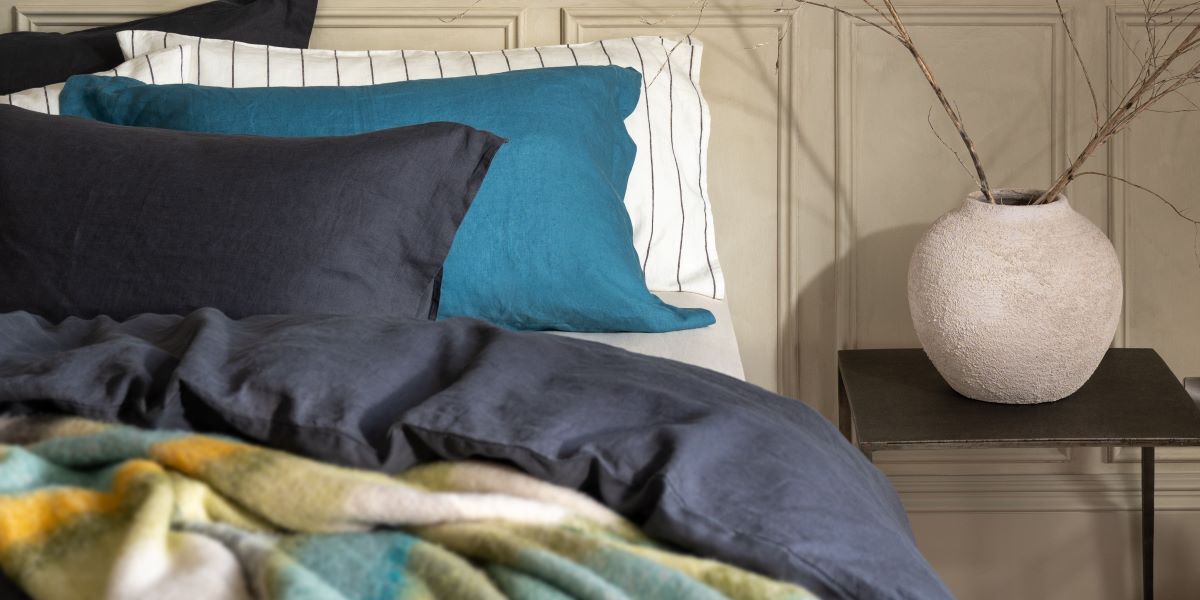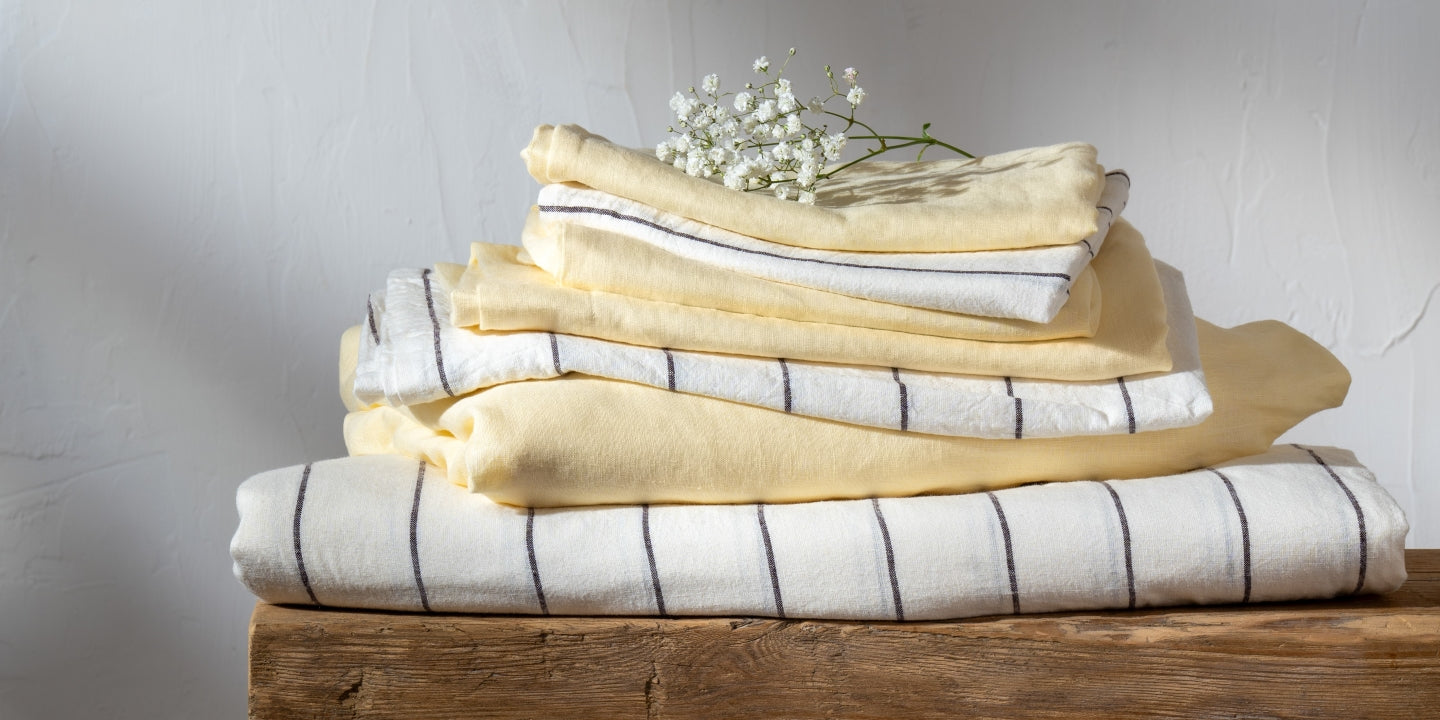How to Donate or Recycle Old Bedding
Treating yourself to new bedding is a delight, but what should you do with your old duvet, pillow or bed sheets? As we’ve become more aware of the damage that binning things does to the environment, many of us are increasingly interested in learning how to dispose of our bedding responsibly and are consciously making more sustainable choices.
Read on to find out how you can reduce your impact on the environment by knowing when’s the right time to replace your bedding, how to repurpose or recycle your bedding so it can go to a new home and doesn't go to waste.
Donate your bedding
Where to donate old bedding?
Many organisations are extremely grateful to receive donations. They do request that all textiles have been washed and are in good condition. Be sure to check before you go as some organisations cannot accept bedding unless it is new and unused.
- Salvation Army Trading - Bed linen
- Reuse Network - Cushions, pillows
- Homeless.org - Tool to find local housing shelters for donations
Donate your bedding to animal shelters
Just like us, animals feel the cold in the winter. Many local animal shelters heavily rely on donations of bedding, duvets, blankets, pillows, cushions and towels to keep their furry friends warm.
Feather-filled duvets and pillows can be used as bedding for cats and dogs, and blankets and bedspreads are best for animals like rabbits (who like to nibble!).
- RSPCA - Bedding, towels, blankets
- National Animal Welfare Trust - Blankets, towels, bedsheets
Recycle your bedding
Where to recycle your bedding
If your bedding isn’t in great condition, it may be possible to give it a new life. Used bedding can be recycled at many recycling points across the country - be sure to contact your local centres to see what services they offer before you arrive. Here are some organisations to help you find one in your local area:
- Drop Point - Blankets, towels
- Recycle Now - Tool to find local linen recycling points
- London Recycles - Tool to find local linen recycling points
Repurpose your bedding
Alternative uses for old bedding
If you’d prefer to get creative with your old bedding, there are plenty of ways you can give them a second lease of life. Here are a few of our favourites:
- Repurpose the fabric from old bed sheets and duvet covers. From cleaning cloths to a child’s garden teepee, the only limit is your imagination.
- Treat your pets to a snuggly new bed. Whether it’s an old pillow or duvet, your pets will love having a soft new bed that reminds them of you – you find a home for your old bedding and save on the money for a new pet bed – win-win!
- Go wild! Use your duvet as a comfy base when camping - just because it's not in tip-top condition to be used on your bed at home, it doesn't mean it's at the end of its life.
- Use duvet or pillow fill for craft projects. Just because the fill isn’t worth sleeping under, doesn’t mean you can’t use it. Synthetic and feather & down fills are ideal for using in cushions, draft excluders and toys. Just make sure you’ve thoroughly cleaned the fill before using it. Make it fun!
- Give back to nature. Place small amounts of feather and down around your garden in the early spring so that birds can use it to build their nests
- Compost. Yes, you did hear right! Natural fibres – cotton, linen, hemp, silk, wool and feathers - can all be composted, some of which will biodegrade in a matter of months. So, if your bedding is too old or damaged to use, you could compost it instead. We’d recommend you cut your bedding up into smaller pieces before adding it to your compost heap as this will speed up the decomposition process.
Find a new home for your bedding, don't let it go to waste!





